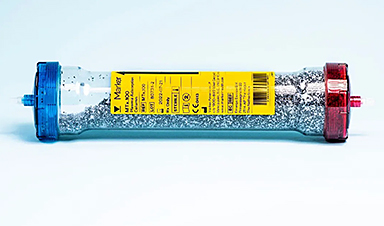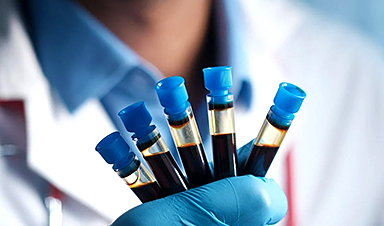A team from the University of Geneva (UNIGE) has devised a novel method for customizing treatments by testing them on artificial tumors.
Determining the optimal treatment for colon cancer can be challenging as each patient’s response to chemotherapy varies considerably. Researchers from the University of Geneva (UNIGE) have developed an innovative method to test various drugs without using the patient’s body or conducting animal experiments. Instead, they utilized organoids, tiny replicas of organs and tissues derived from the patients themselves, and exposed these to the treatments.
The outcomes of these experiments were then compiled into a model. This method paves the way for personalized and enhanced treatments against different types of cancer and a host of other illnesses. The findings were recently published in the Journal of Experimental & Clinical Cancer Research.
With more than 1.4 million people affected each year – 700,000 of them fatally – colorectal cancer is the third most diagnosed cancer in the world and the second most deadly, just after lung cancer. Its treatment is based primarily on a combination of chemotherapies called FOLFOXIRI. However, its effectiveness varies from patient to patient and its side effects are significant. It also leads to progressive drug resistance in most patients.
Almost like organs
‘‘These micro-tissues are not organs as such,’’ explains George M. Ramzy, a post-doctoral researcher in the School of Pharmaceutical Sciences at the Faculty of Science of the UNIGE and first author of the study. ‘‘They have some important physiological differences, such as not having vascular or nervous systems. However, they are very effective models for testing treatments.’’
The researchers started with cancer tissue taken from untreated patients at the Geneva University Hospitals (HUG). By cultivating stem cells from these tissues – which gradually divided and organized themselves into three-dimensional structures – the scientists were able to produce organoids, or tumoroids, from each patient’s tumor.
‘‘We then tested different drugs on these models, without knowing their genetic background,’’ explains Patrycja Nowak-Sliwinska. This individual background largely determines the effectiveness of the treatments. The researchers, therefore, started from scratch, basing their entire study on the observation of the cells’ response in real-time.
Fast, effective, and customized
These tumor avatars were exposed to a range of seven treatments currently in clinical use. Depending on the response of each patient organoid, the combination, and dosages of these treatments were adapted. All results were mathematically modeled to predict the optimal efficacy and doses for each organoid, i.e. for each patient. These tests were carried out over two weeks. ‘‘This is a clinically relevant time frame: it is the time frame currently needed by the medical profession to choose a treatment after diagnosis,’’ says Patrycja Nowak-Sliwinska.
Thanks to a collaboration between the UNIGE research laboratory and the EPFL, the researchers were then able to determine the stage of each patient’s tumor and the main mutations involved in the progression of the disease. This information is relevant and essential to better understand the choice and mechanism of action of each drug combination. ‘‘Each patient is different and requires a specific treatment,’’ adds Patrycja Nowak-Sliwinska.
This innovative approach, without animal models, has just been patented. It offers personalized treatment for many forms of cancer, but also for other diseases such as cardiovascular or viral diseases. Trials are underway for renal cancer. For the research team, the next step will be to work on organoids from pre-treated colon cancer tumors, which therefore show signs of resistance. The aim will also be to shorten the duration of the optimization process.
News
5 Key Facts About Nanoplastics and How They Affect the Human Body
Nanoplastics are typically defined as plastic particles smaller than 1000 nanometers. These particles are increasingly being detected in human tissues: they can bypass biological barriers, accumulate in organs, and may influence health in ways [...]
Measles Is Back: Doctors Warn of Dangerous Surge Across the U.S.
Parents are encouraged to contact their pediatrician if their child has been exposed to measles or is showing symptoms. Pediatric infectious disease experts are emphasizing the critical importance of measles vaccination, as the highly [...]
AI at the Speed of Light: How Silicon Photonics Are Reinventing Hardware
A cutting-edge AI acceleration platform powered by light rather than electricity could revolutionize how AI is trained and deployed. Using photonic integrated circuits made from advanced III-V semiconductors, researchers have developed a system that vastly [...]
A Grain of Brain, 523 Million Synapses, Most Complicated Neuroscience Experiment Ever Attempted
A team of over 150 scientists has achieved what once seemed impossible: a complete wiring and activity map of a tiny section of a mammalian brain. This feat, part of the MICrONS Project, rivals [...]
The Secret “Radar” Bacteria Use To Outsmart Their Enemies
A chemical radar allows bacteria to sense and eliminate predators. Investigating how microorganisms communicate deepens our understanding of the complex ecological interactions that shape our environment is an area of key focus for the [...]
Psychologists explore ethical issues associated with human-AI relationships
It's becoming increasingly commonplace for people to develop intimate, long-term relationships with artificial intelligence (AI) technologies. At their extreme, people have "married" their AI companions in non-legally binding ceremonies, and at least two people [...]
When You Lose Weight, Where Does It Actually Go?
Most health professionals lack a clear understanding of how body fat is lost, often subscribing to misconceptions like fat converting to energy or muscle. The truth is, fat is actually broken down into carbon [...]
How Everyday Plastics Quietly Turn Into DNA-Damaging Nanoparticles
The same unique structure that makes plastic so versatile also makes it susceptible to breaking down into harmful micro- and nanoscale particles. The world is saturated with trillions of microscopic and nanoscopic plastic particles, some smaller [...]
AI Outperforms Physicians in Real-World Urgent Care Decisions, Study Finds
The study, conducted at the virtual urgent care clinic Cedars-Sinai Connect in LA, compared recommendations given in about 500 visits of adult patients with relatively common symptoms – respiratory, urinary, eye, vaginal and dental. [...]
Challenging the Big Bang: A Multi-Singularity Origin for the Universe
In a study published in the journal Classical and Quantum Gravity, Dr. Richard Lieu, a physics professor at The University of Alabama in Huntsville (UAH), which is a part of The University of Alabama System, suggests that [...]
New drug restores vision by regenerating retinal nerves
Vision is one of the most crucial human senses, yet over 300 million people worldwide are at risk of vision loss due to various retinal diseases. While recent advancements in retinal disease treatments have [...]
Shingles vaccine cuts dementia risk by 20%, new study shows
A shingles shot may do more than prevent rash — it could help shield the aging brain from dementia, according to a landmark study using real-world data from the UK. A routine vaccine could [...]
AI Predicts Sudden Cardiac Arrest Days Before It Strikes
AI can now predict deadly heart arrhythmias up to two weeks in advance, potentially transforming cardiac care. Artificial intelligence could play a key role in preventing many cases of sudden cardiac death, according to [...]
NanoApps Medical is a Top 20 Feedspot Nanotech Blog
There is an ocean of Nanotechnology news published every day. Feedspot saves us a lot of time and we recommend it. We have been using it since 2018. Feedspot is a freemium online RSS [...]
This Startup Says It Can Clean Your Blood of Microplastics
This is a non-exhaustive list of places microplastics have been found: Mount Everest, the Mariana Trench, Antarctic snow, clouds, plankton, turtles, whales, cattle, birds, tap water, beer, salt, human placentas, semen, breast milk, feces, testicles, [...]
New Blood Test Detects Alzheimer’s and Tracks Its Progression With 92% Accuracy
The new test could help identify which patients are most likely to benefit from new Alzheimer’s drugs. A newly developed blood test for Alzheimer’s disease not only helps confirm the presence of the condition but also [...]




















